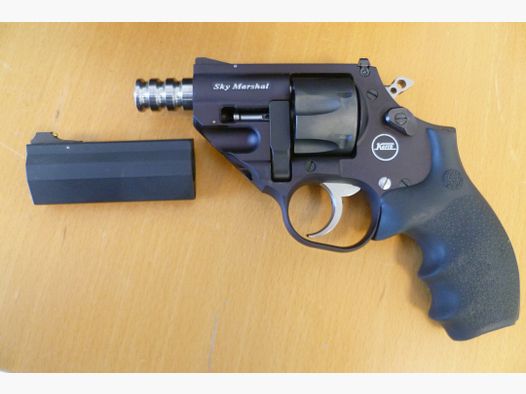Personal safety is a fundamental concern for people around the world. In a time when violent crimes and attacks on individuals are unfortunately on the rise, many people are looking for effective methods of self-defense. One popular option that has gained popularity in recent years is electroshock devices. In this comprehensive article, we will discuss electroshock devices in the context of self-defense. We will look at how they work, legal aspects, advantages and disadvantages, as well as important safety guidelines.
What are Electroshock Devices?
Electroshock devices, also known as stun guns or tasers, are portable electronic devices used for self-defense. They generate an electric charge designed to temporarily impair the muscle control of the attacker. This is done by delivering electric current that reaches the body through electrodes connected to the device.
How Electroshock Devices Work
Electroshock devices work by generating a strong electric current. The current is delivered through two electrodes, which are either held directly against the attacker's body or connected to the electrodes by wires. Upon contact with the body, the current penetrates clothing and causes temporary disruptions in the nervous system, leading to muscle spasms and weakness.
Legal Aspects
The legal situation regarding electroshock devices varies by country and sometimes even by state or region. Some countries completely prohibit the possession or use of electroshock devices, while others have strict regulations. It is extremely important to research the specific laws and regulations in your area before acquiring an electroshock device for self-defense.
Advantages and Disadvantages of Electroshock Devices
Electroshock devices offer a range of advantages and disadvantages to consider.
a) Advantages
- Effective Deterrent: The mere sight of an electroshock device can deter potential attackers, as they recognize the consequences of a possible attack.
- Compact and Portable Design: Electroshock devices are typically handy and easy to carry, making them a practical choice for personal safety.
- No Long-Term Damage: Unlike weapons that can cause fatal injuries, electroshock devices usually do not result in long-term damage or permanent injuries to the attacker. Once the current flow is interrupted, the body typically recovers completely.
- Easy to Use: Electroshock devices do not require special training or particular physical skills to use effectively. They are relatively simple to operate and usually require just the push of a button.
b) Disadvantages
Limited Range: Most electroshock devices have a limited range, usually between 3 and 5 meters. This means that the attacker must be in close proximity to be effectively hit.
Dependence on Batteries: Electroshock devices are battery-operated, so it is important to always ensure that the device is charged or that spare batteries are available. A dead battery can render the device useless.
Risk of Misuse: Since electroshock devices deliver a certain amount of current, there is a risk of injury or misuse with improper application. It is important to use the devices responsibly and only in emergency situations.
Safety Guidelines for Use
To use electroshock devices safely and effectively, the following safety guidelines should be observed:
Knowledge of Local Laws: Familiarize yourself with the specific laws and regulations in your area regarding the possession and use of electroshock devices.
Understanding How It Works: Get to know how your electroshock device works. Read the user manual carefully and practice using it to ensure you can operate the device correctly.
Avoid Use on Children or Vulnerable Individuals: Electroshock devices should not be used on children, elderly individuals, or people with health issues. Consult a professional to ensure that the use of the device is appropriate.
Aim for the Upper Body: When using the electroshock device, aim for the attacker's upper body. Avoid targeted strikes to the head, neck, or genital area, as this could lead to serious injuries.
Escape as a Priority: The goal of using an electroshock device is to buy time and create an opportunity to escape. Take the chance to get to safety and seek help rather than getting involved in a prolonged struggle.
Maintenance and Inspection: Regularly check the condition and battery life of your electroshock device. Ensure that it is functioning properly and has no damage. Replace worn or damaged parts and keep the device clean and dry.
Alternatives to Electroshock Devices
Electroshock devices are not the ideal choice for everyone when it comes to self-defense. Fortunately, there are other alternatives that can be considered:
Pepper Spray
Pepper spray is a popular self-defense tool. It is a chemical substance delivered in spray form that irritates the attacker's eyes and airways, leading to temporary blindness and breathing difficulties.
Personal Alarms
Personal alarms are small, portable devices that can produce a loud alarm sound. They are designed to deter potential attackers and draw attention to your situation.
Self-Defense Courses
Participating in self-defense courses can be an extremely effective way to improve your personal safety. You will learn techniques for self-defense, assertiveness, and situational awareness.
Physical Fitness and Strengthening
Good physical fitness can help improve your chances of escaping a dangerous situation. Regular exercise, especially in martial arts or self-defense techniques, can boost your confidence and help you respond appropriately in critical moments.
In Summary
Electroshock devices can be an effective option for self-defense when used responsibly and in accordance with local laws and safety guidelines. They provide a non-lethal way to deter potential attackers and buy time for escape or calling for help. However, it is important to be aware that they have certain limitations and may not be suitable for everyone. The decision to choose a self-defense tool should be based on individual needs, abilities, and preferences. It is advisable to consider other options such as pepper spray, personal alarms, or self-defense courses and to adopt a holistic approach to personal safety. Ultimately, it is crucial that individuals feel safe and are able to protect themselves in dangerous situations.





























